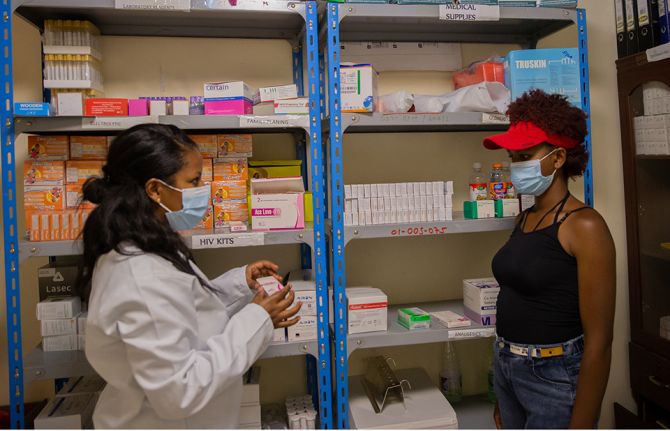
Feature Story
Czech science exhibition opens at UNAIDS
07 December 2016
07 December 2016 07 December 2016The Permanent Mission of the Czech Republic to the United Nations Office and other International Organizations at Geneva and UNAIDS have opened an exhibition celebrating the contribution that scientists have made to advancing medicine and the treatment of viral diseases such as AIDS. The exhibition, which opened on 6 December, is being held at UNAIDS headquarters in Geneva, Switzerland.
Created by Jáchym Šerých, the exhibition focuses on the work of Czech scientist Antonín Holý, who dedicated his life to developing medicines used to treat HIV, hepatitis B, herpes and other viral diseases. The core of the exhibition is a three-dimensional model of a football symbolizing a fullerene—a molecule of carbon. It captures moments in the private and professional life of Mr Holý.
Speaking at the opening, Vinay P. Saldanha, UNAIDS Regional Director for Eastern Europe and Central Asia, said, “The work of scientists like Antonín Holý transformed the view that being HIV-positive was a death sentence into the reality of a long life with dignity for people living with HIV.”
As of June 2016, 18.2 million people were on antiretroviral therapy in the world, a number that was unthinkable when the epidemic started, more than 30 years ago. No treatment was available at the beginning, but thanks to the tireless work of scientists to find innovative solutions together with communities, medicines were developed to save the lives of people living with HIV.
Jan Kára, Permanent Representative of the Czech Republic, said, “Antonín Holý was a man of vision and strong determination, who made alliances and was pragmatic. His inventions made a difference in fighting viral diseases like AIDS.”
Medicines evolved through time. From eight pills a day in 2001, treatment now involves taking one pill a day. Treatment has saved millions of lives, has improved the health of people living with HIV and has helped prevent the transmission of HIV.
Zdeněk Havlas, Honorary Chair of the Institute of Organic Chemistry and Biochemistry, worked with Mr Holý. He said, “The approval of one medicine is a relatively rare event. Antonín Holý started with antiretroviral medicines in the 1990s and kept on developing other medicines, for example to treat hepatitis B.” By doing so, Mr Havlas said his colleague contributed to “making the lives of millions and millions of people better and even possible.”
What does the future hold? Communities around the world count on scientists to carry on their research to make sure that AIDS is no longer a public health threat. There is hope that a cure and a vaccine for AIDS will be found soon.
Region/country
Related
 Government ensures continuity of treatment in Malawi
Government ensures continuity of treatment in Malawi

10 February 2025


